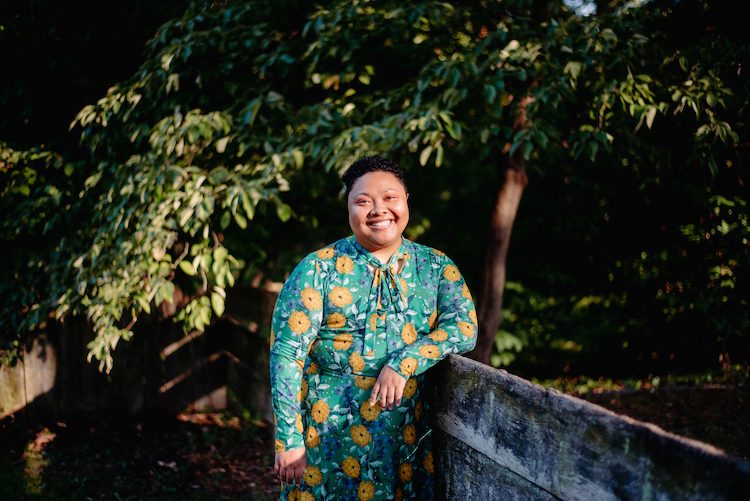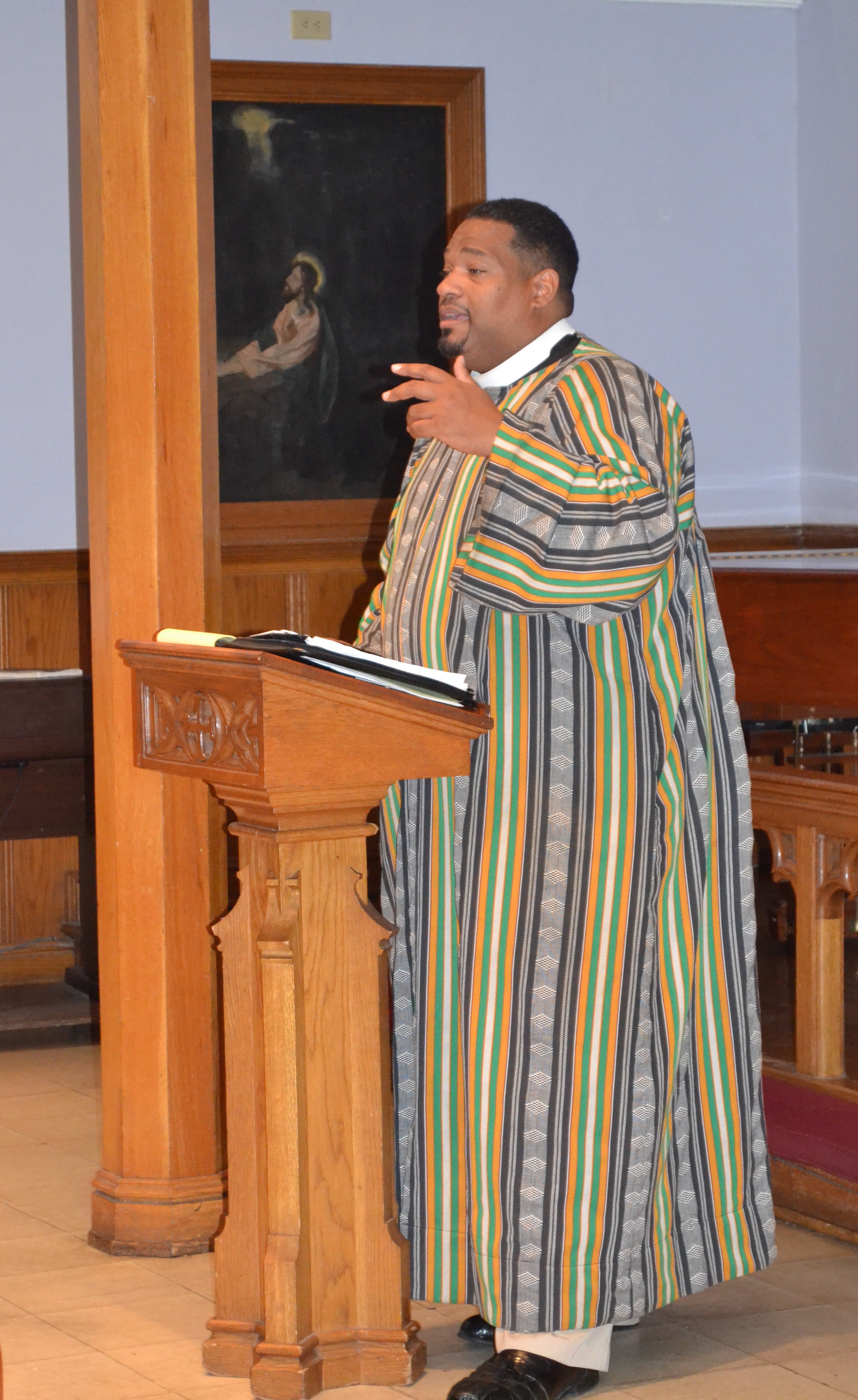Analysis
How Pennsylvanians are trying to bring racial equity to the fraught process of redistricting

Salewa Ogunmefun works to make sure Black communities aren’t divided into multiple electoral districts, known as “packing.” Mei Regn
Redistricting fights have traditionally been waged over political boundary lines.
Lawmakers and voting rights advocates in Pennsylvania have often sparred over whether newly drawn state legislative and congressional districts meet constitutional requirements, or whether they’re drawn in a way that purposefully gives one party an electoral advantage – a practice known as gerrymandering.
But a redistricting fight of a different sort has emerged this year: a battle to ensure that minority communities don’t have their voting power diluted.
RELATED ARTICLES

To the surprise of no one, the decennial redistricting cycle occurring this year has led to claims of gerrymandering and political gamesmanship from both sides of the aisle. It has also presented advocates for minorities throughout Pennsylvania with an opportunity to fight for the newest set of maps to reflect the state’s diversity – and to ensure they aren’t drawn in a way that weakens the voting power of people of color.
And that all starts with where exactly the lines are drawn.
Pennsylvania’s state legislative districts are drawn by the five-member Legislative Reapportionment Commission, made up of four lawmakers and an independent chair, while the state’s congressional districts are decided by the state Legislature and signed into law by the governor.
Both processes take place after the completion of the U.S. Census – and, given that Pennsylvania’s recent population growth was driven by communities of color, advocates say that mapmakers should be taking extra care to make sure that communities of color aren’t divided during the redistricting process – both now and in the future.
“These maps ingrain power in a very particular way that a lot of folks don’t pay as much attention to as an election cycle,” said Salewa Ogunmefun, the executive director of Pennsylvania Voice, a coalition of more than 30 organizations dedicated to expanding political power in communities of color. “But really, because those elections are run in the districts that this process actually creates, we saw an opportunity to actually make sure that these districts created more opportunities for people of color to be able to run for and win office.”
That process, Ogunmefun said, starts with identifying so-called “communities of interest” – or areas that have shared social, cultural, racial, ethnic or policy interests – and making sure those communities aren’t divided into multiple electoral districts – known in redistricting parlance as “cracking,” or shoehorned into a single district – known as “packing.”

Ogunmefun said that if voting power is diluted through either of those two approaches, lawmakers are unlikely to pass policies sought by Black voters, since their voting power would be diminished. “We can’t pass policies that people want to actually see in the statehouse, and that’s what we've seen over the last 30 years,” she said. She pointed to two referendums in Allegheny County and Pittsburgh that ultimately led to voters restricting the use of solitary confinement and banning no-knock warrants.
“If you took that same policy, and we started having that conversation at the state House, it would never even come up for a vote. And that is something that affects Black communities disproportionately more than any other communities,” Ogunmefun added. “But instead of being able to pass policies at the state level that put these protections in place … limiting the ability for us to pass legislation that is good for communities that have historically not had that same access to power is what we see in the state House right now.”
In an attempt to rectify that, Pennsylvania Voice and a host of other organizations sought feedback directly from minority communities. They used that feedback to form their own maps that they then submitted to policymakers for consideration.
Khalif Ali, the executive director of Common Cause Pennsylvania, said the coalition of good government groups has held “several hundred conversations in which they talk to communities of interest and had them document where they saw value in their communities.”
Obtaining that input, for both state and congressional maps, is crucial to developing maps that reflect the state’s communities of color, Ali said.
“We don't consider mapping just to be a mathematical exercise. It's not just about equations. It's about real people whose lives are invariably impacted by how these maps are drawn,” he said. “So we have to take into consideration the human factor of mapping. Yes, you need professionals who can talk about population deviation and partisan bias. You need those experts there. But you also need them to take into consideration the impact that could potentially have on traditionally marginalized populations.”

As a result of conversations with Pennsylvanians in diverse communities across the state, Keystone Counts, a project of Pennsylvania Voice that includes the Amistad Law Project and Common Cause Pennsylvania, submitted a series of eight “Unity Maps” that outlined recommended state House districts for mapmakers to consider. The maps were formed from 700 individual submissions where voters outlined specific parts of their respective communities that they wanted policymakers to include in new state legislative districts.
Ogunmefun said that many of the preliminary districts proposed by the LRC have factored in the Unity Map requests, but others have expressed concerns with them.
Kris Henderson, executive director of the Amistad Law Project, said the preliminary maps approved by the LRC are an improvement from the last set of state legislative maps, which were based on 2010 U.S. Census data.
“They didn’t wholesale adopt them,” Henderson said of the Unity Maps. “But I do think that they seemed to be in coordination with each other. I think they make sense together.”
However, Henderson’s own community – Philadelphia’s Germantown neighborhood – would be divided under the preliminary plan approved by the LRC, which threatens to negatively impact the community’s voting power.
“Germantown is a majority Black neighborhood,” Henderson said, noting that Germantown residents could end up having two separate state representatives in Harrisburg. “My concern is with the neighborhood being split up, our power obviously being reduced … and not being able to really say what it is that we want and need – what will be beneficial to this community.”

The LRC went on to approve final state House and Senate maps on Feb. 4, and Henderson said the final plan still leaves much to be desired in Philadelphia’s Germantown neighborhood.
“Most of the closest friends we have are now in our district but it still splits Germantown and keeps us from being in the same community of interest as most of the rest of Germantown,” Henderson said.
Bishop Dwayne Royster, executive director of POWER Interfaith, an ecumenical organization focused on racial and economic justice, knows firsthand how district boundaries can hurt communities of color. Royster ran for state representative in the 70th House District in 2008 – a map that included the “very urban” Norristown and the “deepy rural” Harleysville. Royster said the two vastly different communities didn’t belong in one district, given their demographic and ideological differences.
“There was absolutely no connection between the folk in Norristown and the people in Harleysville,” Royster said. “There was no relationship; there was no reason for that district to be drawn like that other than it was gerrymandered to make sure that Republicans could continue to win.”
Royster described campaigning in the district as a “struggle,” noting how difficult it was to connect with constituents so different from those in his own community in Norristown. “In normal circumstances, I would have just stayed up in Norristown and just worked Norristown really hard, but I wanted to build relationships with the folk all across the district, but some of the more upper-middle-class areas to more rural white areas just were not as receptive to my presence in that space at the time,” he said.
Republicans have also taken issue with some of the district boundaries on state legislative maps, believing that split communities could dilute Hispanic voting power in certain parts of the state. In recent years, there has been an uptick in Latino voters voting Republican, as evidenced by the 2020 census and studies by the Pew Research Center.

State House Majority Leader Kerry Benninghoff, a Republican who serves on the Legislative Reapportionment Commission, said in January that municipal splits in Harrisburg, Allentown, Lancaster and Reading left him “deeply concerned,” and that those splits could “create specific problems” under the Voting Rights Act.
He doubled down on his concerns when the LRC voted to approve a final plan for state House districts in early February.
“Many minority communities, particularly Hispanics in Allentown, Reading, Lancaster and Black voters in Harrisburg will be cracked and, if anything, denied a realistic chance of electing more members of the General Assembly that have their shared experience and can represent their communities from a place of familiarity,” Benninghoff said.
With both sides of the political spectrum expressing concerns over how minority communities are drawn into state legislative districts, the question becomes whether there is a viable solution and, if so, what it would look like. According to advocates following the redistricting process, the process itself needs to undergo some major changes.
While Ogunmefun praised the number of opportunities the public had to offer input on the LRC’s preliminary maps, she added that public hearings and other opportunities need to be codified either in state law or in the state constitution. She also suggested that the LRC hire an expert in “racially polarized voting and analysis.”
Others said citizens should have a larger role in the redistricting process, which could be accomplished by either expanding or replacing the commission that draws state legislative maps. But an independent citizens commission drawing maps instead of state legislators could present its own challenges.

